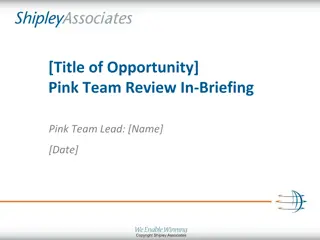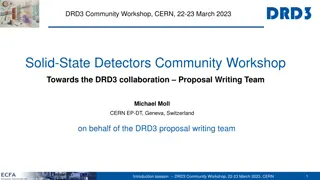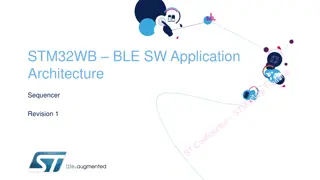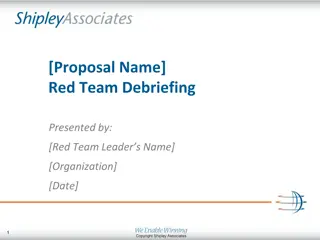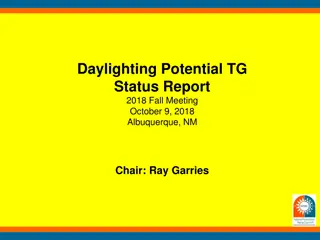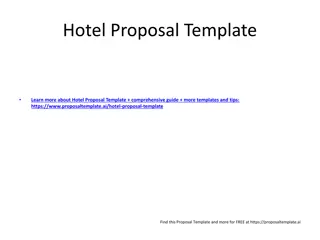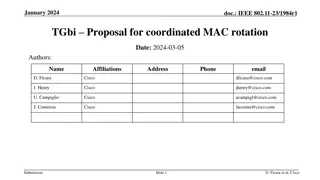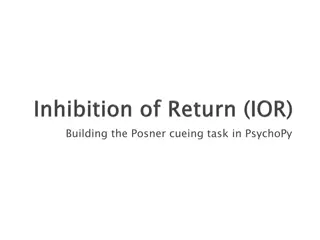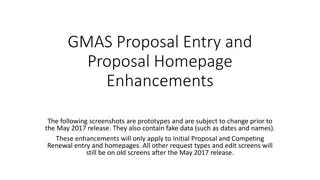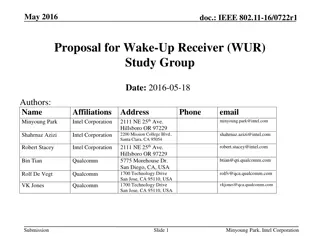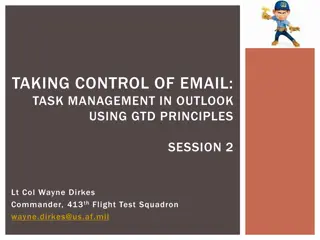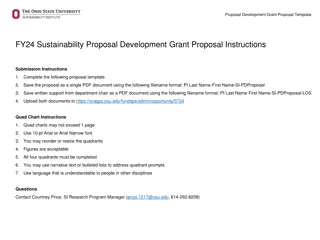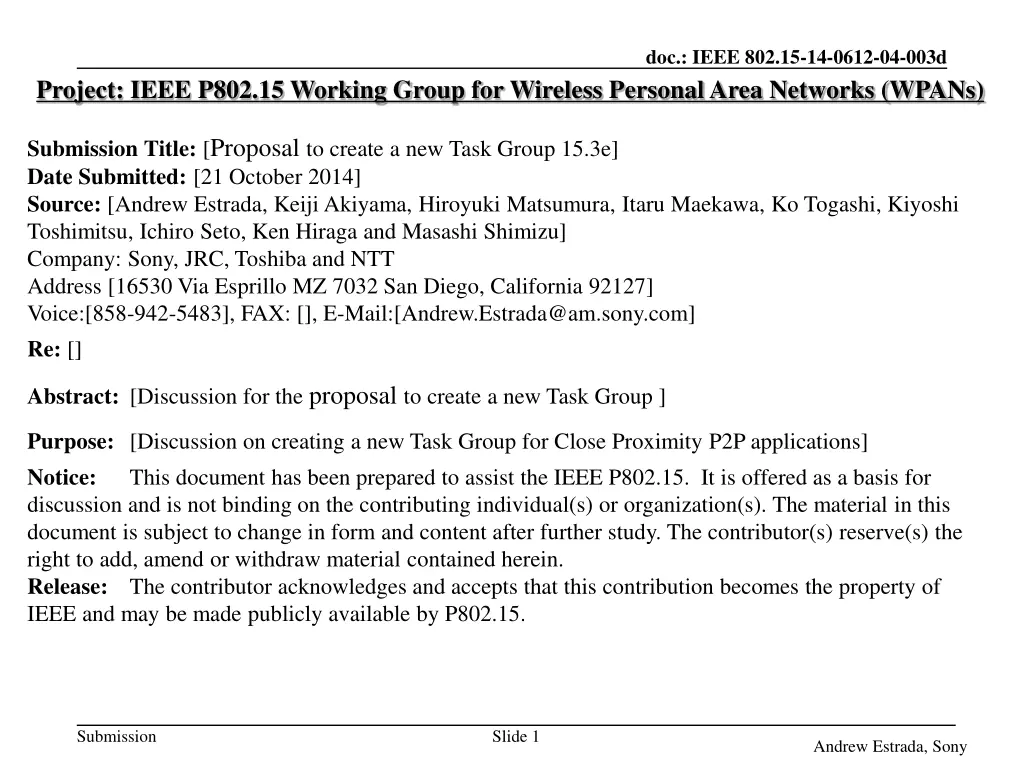
Enhanced MAC for Close Proximity P2P Communication
"Explore the proposal for creating a new Task Group focused on enhancing MAC for Close Proximity P2P applications, aiming for quick link setup and release in touch-based communication systems like kiosks. Addressing issues with current MAC for optimized transactions and support for various traffic types."
Download Presentation

Please find below an Image/Link to download the presentation.
The content on the website is provided AS IS for your information and personal use only. It may not be sold, licensed, or shared on other websites without obtaining consent from the author. If you encounter any issues during the download, it is possible that the publisher has removed the file from their server.
You are allowed to download the files provided on this website for personal or commercial use, subject to the condition that they are used lawfully. All files are the property of their respective owners.
The content on the website is provided AS IS for your information and personal use only. It may not be sold, licensed, or shared on other websites without obtaining consent from the author.
E N D
Presentation Transcript
doc.: IEEE 802.15-14-0612-04-003d Project: IEEE P802.15 Working Group for Wireless Personal Area Networks (WPANs) Submission Title: [Proposal to create a new Task Group 15.3e] Date Submitted: [21 October 2014] Source: [Andrew Estrada, Keiji Akiyama, Hiroyuki Matsumura, Itaru Maekawa, Ko Togashi, Kiyoshi Toshimitsu, Ichiro Seto, Ken Hiraga and Masashi Shimizu] Company: Sony, JRC, Toshiba and NTT Address [16530 Via Esprillo MZ 7032 San Diego, California 92127] Voice:[858-942-5483], FAX: [], E-Mail:[Andrew.Estrada@am.sony.com] Re: [] Abstract: [Discussion for the proposal to create a new Task Group ] Purpose: [Discussion on creating a new Task Group for Close Proximity P2P applications] Notice: This document has been prepared to assist the IEEE P802.15. It is offered as a basis for discussion and is not binding on the contributing individual(s) or organization(s). The material in this document is subject to change in form and content after further study. The contributor(s) reserve(s) the right to add, amend or withdraw material contained herein. Release: The contributor acknowledges and accepts that this contribution becomes the property of IEEE and may be made publicly available by P802.15. Submission Slide 1 Andrew Estrada, Sony
doc.: IEEE 802.15-14-0612-04-003d Proposal to create a new Task Group 15.3e WNG session IEEE802.15 November 2014 Submission Slide 2
doc.: IEEE 802.15-14-0612-04-003d Why we need an enhanced MAC Usage focus: kiosk downloading and toll gate use cases Objectives of MAC enhancements: Maximum throughput Quick link setup Quick link release Touch motion indicates user s intention to make or break the connection Close Proximity Communication Systems Submission Slide 3
Kiosk Use Case = Transaction Density doc.: IEEE 802.15-14-0612-04-003d kiosk kiosk kiosk kiosk kiosk Submission Slide 4
Kiosk Use Case = Transaction Density doc.: IEEE 802.15-14-0612-04-003d kiosk kiosk Spatial Density kiosk kiosk Temporal Density kiosk Submission Slide 5
doc.: IEEE 802.15-14-0612-04-003d 250 msec Total touch time Total file size 2 hr program HD H.265 1 GByte Submission Slide 6
doc.: IEEE 802.15-14-0612-04-003d 802.15.3 MAC not optimized for kiosk usage What we need Fast transactions (250 ms toll gate, 3s kiosk) Single traffic type: File transfer up to 10 GB Transaction density: time and space New proposed touch model Close proximity touch or swipe Existing MAC issues Overhead due to multiple DEVs support Must support multiple traffic types Connection-oriented network Up to several meters away 802.15.3c kiosk downloading model Submission Slide 7
doc.: IEEE 802.15-14-0612-04-003d Use case enables key assumptions A proximity pair is only established to complete a single transaction A proximity pair consists of a single link between 2 devices Every link has full access to all the network bandwidth Submission Slide 8
Touch is simple for the user doc.: IEEE 802.15-14-0612-04-003d Conventional network: User 1. Search 2. Discover 3. Select 4. Connect 5. Reserve bandwidth 6. Start traffic Human Touch and Get New close proximity: User 1. Touch Automatic Search, Discover, Select, Connect, Reserve B/W Start traffic a few cm kiosk Submission Slide 9
Limitations of 802.15.3 MAC doc.: IEEE 802.15-14-0612-04-003d Connection setup time comparison: 65 msec + Legacy 802.15.3 MAC spec 2 msec (toll gate) Required 802.15.3eMAC items Enhancements MAC-level data integrity Sequential paired P2P access (not multiple simultaneous P2MP access) kiosk 7 6 5 Slide 10 4 3 2 1 Submission
Maximize effective throughput doc.: IEEE 802.15-14-0612-04-003d To fulfill these requirements, one must: Operate in P2P (point-to-point) mode Limit communications to close proximity range Place upper limit on EIRP or field strength Remove redundant processes not essential for P2P connectivity Remove DEVID Simplify association step Beacon not required after establishment of connection Only CAP is required (CTAP not needed) etc. Guarantee data integrity at MAC level Maintain throughput even when errors occur during aggregation Unlimited retry Reordering buffer not required Reduce buffer size Minimize round trip latency and maximize throughput Submission Slide 11
Quick link setup and release doc.: IEEE 802.15-14-0612-04-003d Keep Superframe duration short before link setup Ex.: under 200usec Limited by mMinSuperframeDuration (over 1msec at present) Simplify Association process Eliminate DEVID Reduce amount of frame exchanges Response to Association Request (ACK, Association Response) not required Include mechanism to complete connection setup within MAC level (no need to query upper layers) To enable quick release: Preferably an explicit release scheme not dependent on timeouts Connection shutdown after sending Disassociation Include mechanism to avoid a DEV to re-associate with the same device immediately after disassociating MAC level solution preferred. Method other than timer may be needed. Submission Slide 12
Current and proposed setup procedure doc.: IEEE 802.15-14-0612-04-003d Current procedure: Proposed new simplified procedure: Omitted steps Omitted steps Eliminated steps are shown in shade Submission Slide 13
Summary of Beacon enhancements doc.: IEEE 802.15-14-0612-04-003d Purpose of Beacon Search (not needed after establishment of P2P session) Sync (no need to manage traffic) Short beacon interval before connection; No beacon after connection Eliminate notice of Beacon interval change Provide method to infer that DEV is no longer sending Beacons Remove Beacon-lost procedure from DEV Submission Slide 14
doc.: IEEE 802.15-14-0612-04-003d Hard deadline: 2020 Tokyo Olympics and Paralympics Need published specification by end 2017 Current plan calls for May 2017 Submission Slide 15
Request to Working Group doc.: IEEE 802.15-14-0612-04-003d Initiate a new Study Group Task: Address the kiosk/toll gate use case Output: PAR for 802.15.3e Task Group Focus on the enhanced MAC for the Kiosk use case Coordinate with 802.15.3d for any PHY issues Time frame: WG approval of PAR and CSD in Jan 2015 Submit PAR to EC by Mar 2015 session Appoint Study Group chair Recommend Dr. Thomas K rner, Technische Universit t Braunschweig Submission Slide 16
doc.: IEEE 802.15-14-0612-04-003d Call for Interest Submission Slide 17
doc.: IEEE 802.15-14-0612-04-003d PHY Rates Table 3. Options for higher transmission rates: This table is based on the frequency channels in the 60GHz band (70% MAC efficiency is used in the calculation of data transmission times) Data transmission time for a 2-hour movie (0.9 GB) [s]*1 1.6 1.1 0.2 0.24 0.15 No. of frequency channels Rate [Gbps] Modulation MIMO 16QAM 64QAM 64QAM 256QAM 1024QAM 16QAM 64QAM *1: H.265 Hi-definition, Bitrate = 1 Mbps 6.6 9.9 40 53 66 1 (SISO) 4 2 1 16x16 > 100 < 0.1 Submission Slide 18
doc.: IEEE 802.15-14-0612-04-003d Frequency Channels Channel 1 Channel 2 Channel 3 Channel 4 Japan (57.00 Japan (57.00 - - 66.00 GHz) 66.00 GHz) Europe (57.00 Europe (57.00 - - 66.00 GHz) 66.00 GHz) U.S. and Canada (57.05 U.S. and Canada (57.05 - - 64.00 GHz) 64.00 GHz) South Korea (57.00 South Korea (57.00 - - 64.00 GHz) 64.00 GHz) China (59.00 China (59.00 - - 64.00 GHz) 64.00 GHz) Australia Australia (59.40 (59.40 - - 62.90 GHz) 62.90 GHz) 57.00 57.24 58.32 59.40 60.48 61.56 62.64 63.72 64.80 65.88 66.00 Frequency [GHz] Figure 8 Unlicensed spectrum allocation in 60 GHz [3]. The limitation of the transmission power is described in Table 95 of IEEE802.15.3c Submission Slide 19
Toll gate example doc.: IEEE 802.15-14-0612-04-003d Typical Japanese 2 hr program 114 min of content 856 MB in H.265 4K Throughput = 28 Gbps Total touch time = 250 msec 3 msec link setup 247 msec file transfer time Submission Slide 20
doc.: IEEE 802.15-14-0612-04-003d How long will people wait? (% of subjects that tolerate wait time) Age 20's Age 30's Age 40's Avg Men Women 83 79 88 77 86 85 3 sec 59 53 66 58 62 55 5 sec 51 48 55 51 54 47 8 sec http://www.citizen.co.jp/research/index.html Submission Slide 21


